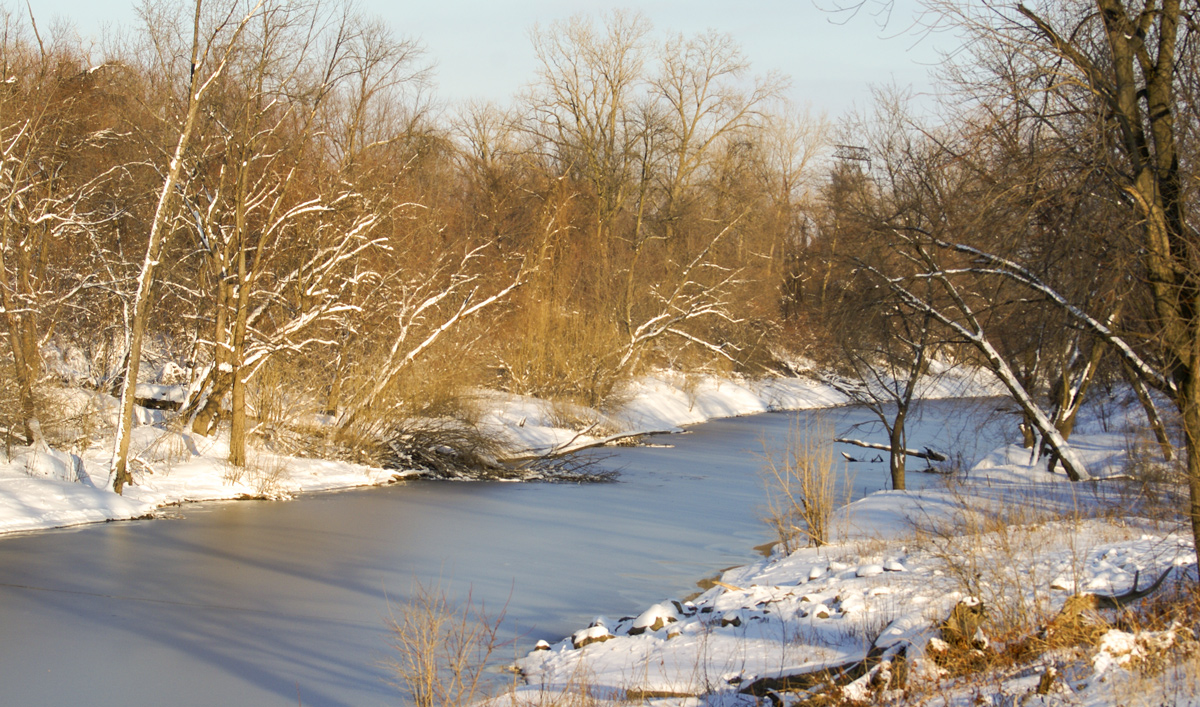At Wood River, two hunters bring in part of a local settler’s hog that they found hanging in the woods. They tell Clark that it is bear meat. Rising water threatens the barge‘s moorings, and Lewis works in Cahokia and St. Louis.
Cahokia Creek Diversion Channel
Photo provided by Lewis & Clark State Historic Site, Hartford, Illinois. Used by permission.
The above photo approximates the Wood River scene in January 1804.The Cahokia Channel diverts Cahokia Creek and flows past today’s reconstruction of Camp River Dubois. The actual winter camp was across from the 1804 mouth of the Missouri and next to the Wood River. See The Mouth of the Missouri.
Rising Waters
the Creek rose Considerably last night the river full of Ice, and the wind which blows from the West blows it to this Shore . . . . visited the boat frequently this day under apprehenion of the Creek which is now riseing washing the earth from the foot of the pries which is fixed under.
—William Clark
Stolen Hog
Two men whome I sent to hunt grouse returned with a part of a hog which they found hung up in the woods & brought it in a[s] Bear meat.
—William Clark
Celestial Observations
I took the altitude of
U. L. with the quaderent and made it 55° 40′ 30″ N. Errer of instrmt. 1° 13′ 0″ + quadt
—William Clark
Weather Diary
Therm. at rise
weather wind Therm. at 4 oClock weather wind River fair W fair W the River a Dubois rise a little
—Meriwether Lewis and William Clark[1]To assist the reader, the editor of this web page has omitted the date column, merged the “River” columns, and spelled out some abbreviations.
Experience the Lewis and Clark Trail
The Lewis and Clark Trail Experience—our sister site at lewisandclark.travel—connects the world to people and places on the Lewis and Clark Trail.
Plan a trip related to January 5, 1804:

Winter Camp at Wood River (Camp Dubois) is a High Potential Historic Site along the Lewis and Clark National Historic Trail managed by the U.S. National Park Service. The site, near Hartford, Illinois, is managed as Lewis and Clark State Historic Site and is open to the public.
Notes
| ↑1 | To assist the reader, the editor of this web page has omitted the date column, merged the “River” columns, and spelled out some abbreviations. |
|---|



